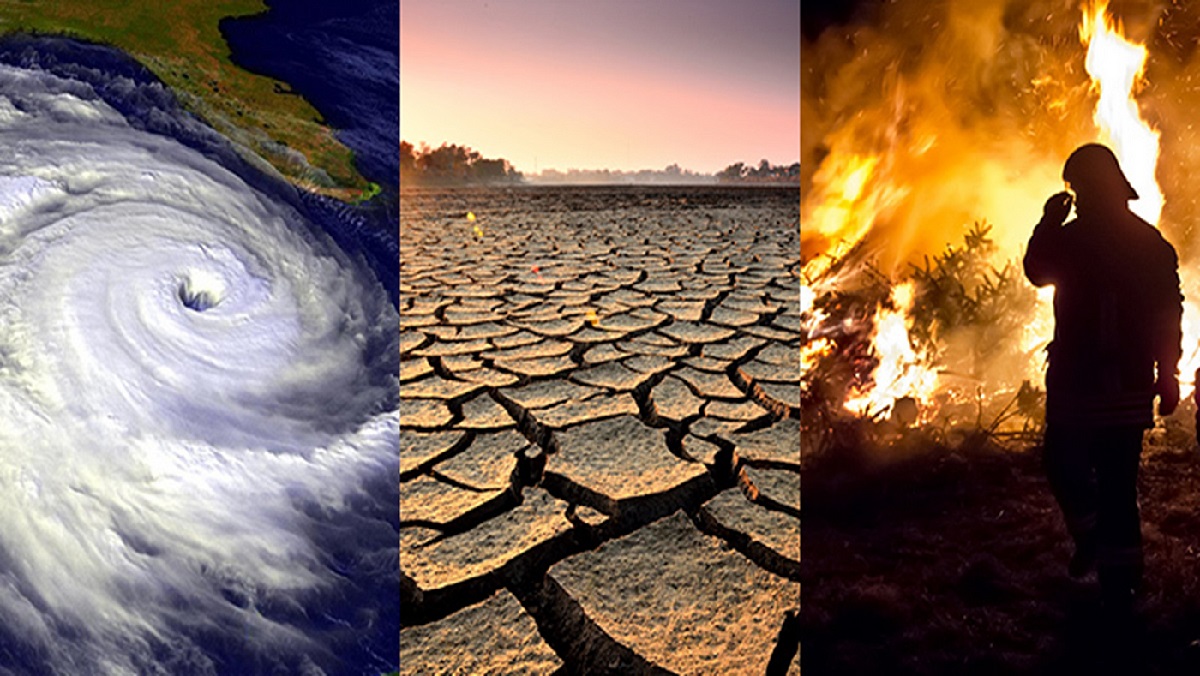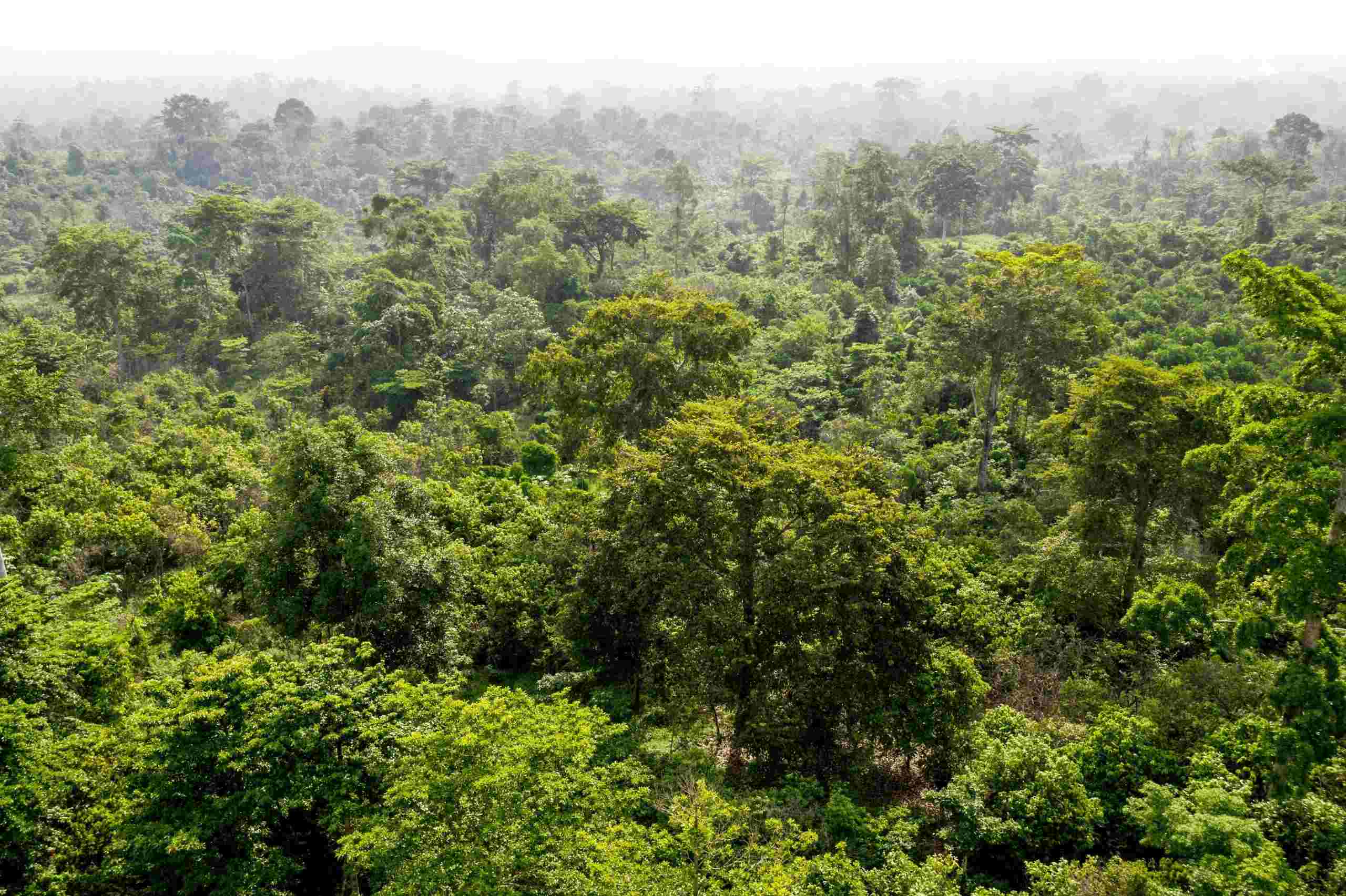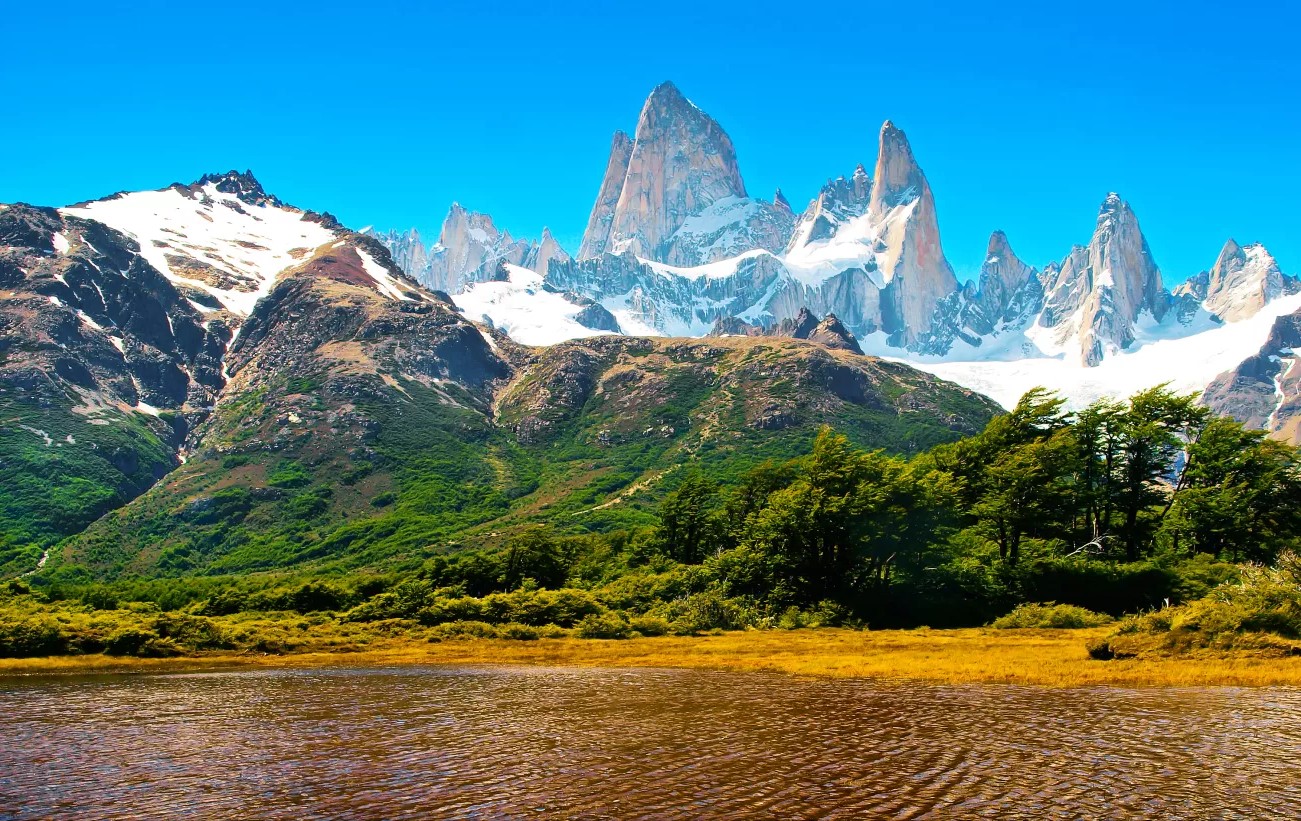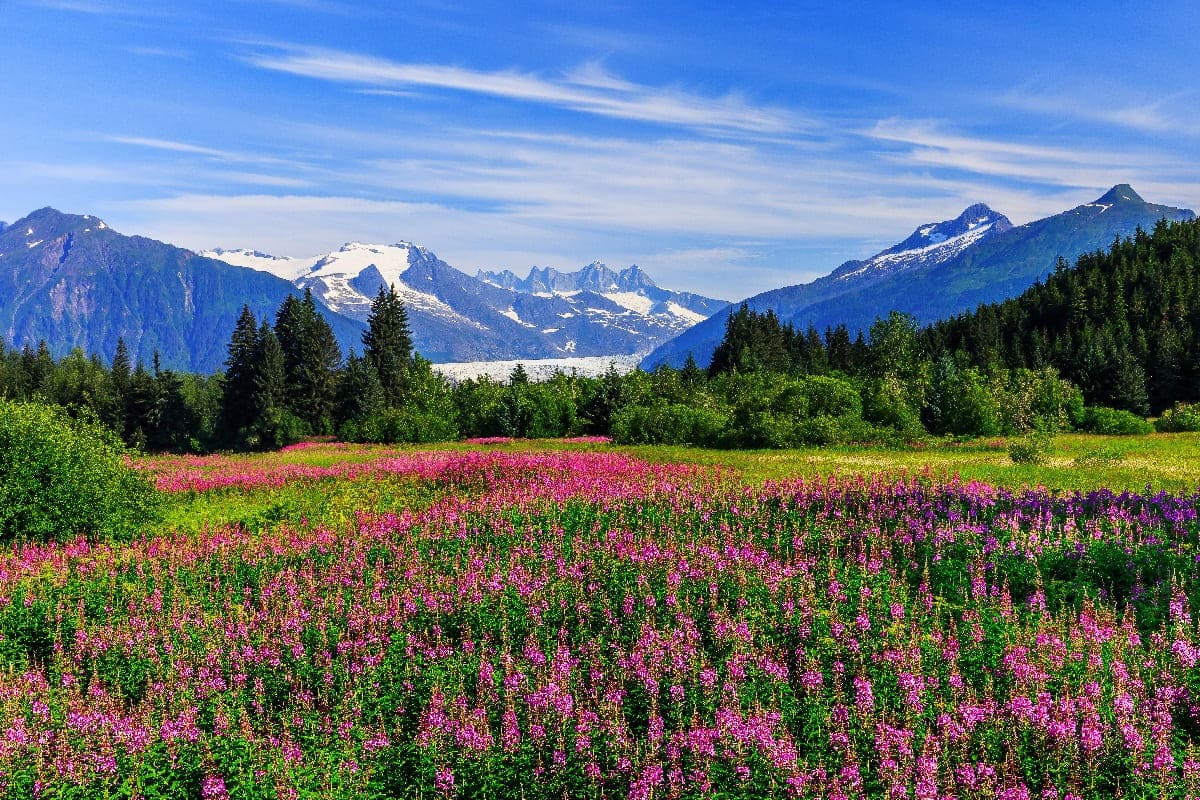Home>Weather and Climate>The Climate Of Rainforests: Exploring The Weather Patterns And Conditions


Weather and Climate
The Climate Of Rainforests: Exploring The Weather Patterns And Conditions
Published: March 1, 2024
Explore the weather patterns and conditions of rainforests, including the climate and its impact on the ecosystem. Learn about the unique weather phenomena in these lush environments.
(Many of the links in this article redirect to a specific reviewed product. Your purchase of these products through affiliate links helps to generate commission for Temperatures.com, at no extra cost. Learn more)
Table of Contents
Introduction
Rainforests are among the most captivating and diverse ecosystems on our planet, characterized by their lush vegetation, vibrant wildlife, and unique climate. The climate of rainforests plays a pivotal role in shaping the intricate web of life within these ecosystems. From the towering canopies to the rich forest floor, the weather patterns and conditions in rainforests are a driving force behind the remarkable biodiversity and ecological balance found within these regions.
The climate of rainforests is a complex and dynamic system that influences every aspect of life within these verdant landscapes. From the Amazon to the Congo Basin, rainforests are known for their high levels of rainfall, soaring temperatures, and humidity that hangs in the air like a comforting blanket. These weather patterns create an environment that supports an astonishing array of plant and animal species, many of which are found nowhere else on Earth.
Exploring the climate of rainforests offers a window into the awe-inspiring forces of nature at work. It provides a deeper understanding of the delicate balance that sustains these ecosystems and the profound impact they have on the health of our planet. By delving into the intricacies of rainforest weather patterns and conditions, we can gain a greater appreciation for the remarkable resilience and interconnectedness of these vital ecosystems.
As we embark on this journey to uncover the mysteries of rainforest climate, we will unravel the factors that shape these unique weather patterns, delve into the seasonal variations that define the rhythm of life in the rainforest, and examine the profound impact of climate change on these irreplaceable ecosystems. Join us as we venture into the heart of the rainforest, where the symphony of life is orchestrated by the ever-changing melody of weather and climate.
The Importance of Rainforest Climate
The climate of rainforests holds profound significance not only for the ecosystems within these lush landscapes but also for the overall health of our planet. Rainforests are often referred to as the "lungs of the Earth," and their climate plays a pivotal role in sustaining this vital title. The interplay of temperature, humidity, and rainfall in rainforests creates a nurturing environment that supports an unparalleled diversity of plant and animal species, many of which are endemic to these regions.
One of the most crucial aspects of rainforest climate is its role in regulating the global carbon cycle. The dense vegetation in rainforests acts as a massive carbon sink, absorbing carbon dioxide from the atmosphere through the process of photosynthesis. This not only helps mitigate the impacts of climate change but also contributes to the oxygen production that is essential for life on Earth. The climate of rainforests, with its warm temperatures and abundant rainfall, provides the ideal conditions for this carbon sequestration to occur on a grand scale.
Furthermore, the intricate web of life within rainforests is intricately linked to the climate. The consistent warmth and high humidity create a haven for an astonishing array of plant species, from towering trees to delicate orchids, each playing a vital role in the ecosystem. The climate also sustains a rich tapestry of wildlife, from colorful birds to elusive big cats, all of which have adapted to thrive in the unique conditions of the rainforest.
Moreover, the climate of rainforests influences regional and global weather patterns. The moisture released by rainforests through evapotranspiration contributes to the formation of clouds and precipitation, impacting weather systems far beyond the borders of these ecosystems. This interconnectedness underscores the far-reaching influence of rainforest climate on the broader environment.
In essence, the importance of rainforest climate cannot be overstated. It is a cornerstone of the delicate balance that sustains these invaluable ecosystems and exerts a profound influence on the health of our planet as a whole. Understanding and preserving the climate of rainforests is not only essential for the preservation of biodiversity but also for the well-being of our global ecosystem.
Factors Influencing Rainforest Weather Patterns
The weather patterns in rainforests are shaped by a myriad of factors, each playing a crucial role in creating the unique climate that defines these lush ecosystems. One of the primary influencers of rainforest weather patterns is the geographical location of these regions. Rainforests are typically found near the equator, where they experience consistent sunlight throughout the year. This proximity to the equator results in warm temperatures, which form the foundation of the rainforest climate.
The proximity to large bodies of water also significantly influences rainforest weather patterns. The presence of oceans or seas near rainforests contributes to high levels of humidity, as moisture from these water bodies evaporates and is carried inland by prevailing winds. This moisture-laden air interacts with the warm temperatures, leading to the formation of the characteristic heavy rainfall that sustains the lush vegetation of rainforests.
Furthermore, the complex topography of rainforest regions plays a pivotal role in shaping weather patterns. The varied elevations, from lowland forests to mist-shrouded mountain slopes, create microclimates within rainforests. These microclimates can result in variations in temperature, precipitation, and humidity, further enriching the diversity of these ecosystems.
The intricate interplay between the atmosphere and the lush vegetation of rainforests also influences weather patterns. The process of evapotranspiration, where plants release water vapor into the air, contributes to the moisture content of the atmosphere. This, in turn, affects cloud formation and precipitation, creating a feedback loop that sustains the high levels of rainfall in rainforests.
Additionally, the seasonal shifts in weather patterns, such as the movement of the Intertropical Convergence Zone (ITCZ), impact rainforest climates. The ITCZ, a band of intense rainfall near the equator, migrates north and south with the changing seasons, bringing periods of heavy rainfall to different parts of the rainforest throughout the year.
In essence, the weather patterns in rainforests are influenced by a complex interplay of geographical location, proximity to water bodies, topography, vegetation, and seasonal variations. These factors converge to create the remarkable climate that sustains the unparalleled biodiversity and ecological richness of rainforests. Understanding these influences is essential for appreciating the delicate balance that underpins the weather patterns in these vital ecosystems.
Temperature and Humidity in Rainforests
The temperature and humidity in rainforests play a pivotal role in shaping the unique climate of these biodiverse ecosystems. Rainforests are characterized by consistently warm temperatures, with minimal seasonal variation. The proximity to the equator ensures that rainforests receive abundant sunlight throughout the year, maintaining temperatures that typically range between 77°F and 88°F (25°C to 31°C). This perpetual warmth creates an environment that fosters the lush growth of vegetation and sustains a diverse array of wildlife.
Humidity is another defining feature of rainforest climates. The high levels of humidity, often exceeding 80%, create a palpable sense of moisture in the air. This humidity is a result of the abundant evapotranspiration from the dense vegetation in rainforests. The process of evapotranspiration, where plants release water vapor through their leaves, contributes to the moisture content of the atmosphere, creating a perpetual cycle of humidity and rainfall.
The combination of warm temperatures and high humidity in rainforests creates an environment that is not only conducive to the growth of a staggering variety of plant species but also provides a habitat for an extraordinary diversity of animal life. The consistent warmth allows for year-round growth and flowering of plants, while the high humidity supports the proliferation of epiphytes, such as orchids and bromeliads, which thrive in the moist air and on the branches of trees.
Moreover, the warm temperatures and high humidity in rainforests contribute to the formation of clouds and the subsequent heavy rainfall that is characteristic of these ecosystems. The moisture-laden air rises, cools, and condenses, leading to the frequent and intense rainfall that sustains the verdant landscapes of rainforests.
In essence, the temperature and humidity in rainforests create a nurturing environment that supports an unparalleled richness of life. The perpetual warmth and high moisture levels foster the growth of an astonishing array of plant species and provide a haven for a diverse assemblage of wildlife. Understanding the interplay of temperature and humidity is essential for appreciating the intricate balance that sustains the remarkable ecosystems of rainforests.
Precipitation and Rainfall in Rainforests
The precipitation and rainfall in rainforests are defining characteristics of these vibrant ecosystems, shaping the lush landscapes and sustaining the remarkable biodiversity found within them. Rainforests are renowned for their exceptionally high levels of rainfall, often receiving between 80 to 400 inches (200 to 1,000 centimeters) of rain annually. This abundant precipitation is a result of the complex interplay of factors that create the unique climate of rainforests.
The warm temperatures and high humidity in rainforests contribute to the formation of clouds and the subsequent heavy rainfall. The moisture-laden air, saturated with water vapor from the surrounding vegetation, rises and cools as it encounters the cooler upper atmosphere. This cooling causes the water vapor to condense into clouds, eventually leading to the release of precipitation in the form of rain. This cycle of evaporation, condensation, and rainfall perpetuates the lushness of rainforests, providing the essential moisture that sustains the diverse array of plant and animal life.
The consistent and abundant rainfall in rainforests supports the growth of a myriad of plant species, from towering canopy trees to delicate ferns and mosses. The precipitation also nourishes the rich soil, replenishing nutrients and fostering the lush vegetation that defines these ecosystems. Furthermore, the heavy rainfall creates a network of streams and rivers that meander through the rainforests, shaping the landscape and providing essential habitats for aquatic life.
The impact of precipitation and rainfall extends beyond the boundaries of rainforests, influencing regional and global weather patterns. The moisture released by rainforests through evapotranspiration contributes to the formation of clouds, which can affect weather systems far beyond the immediate vicinity of these ecosystems. Additionally, the role of rainforests in regulating the global water cycle is of paramount importance, as the abundant rainfall in these regions contributes to the overall balance of water distribution on Earth.
In essence, the precipitation and rainfall in rainforests are fundamental components of the intricate climate that sustains these invaluable ecosystems. The abundant rainfall not only shapes the physical characteristics of rainforests but also plays a vital role in supporting the unparalleled biodiversity found within these lush landscapes. Understanding the dynamics of precipitation and rainfall is essential for appreciating the profound influence of weather patterns on the resilience and vitality of rainforests.
Seasonal Variations in Rainforest Climate
Seasonal variations in rainforest climate, although less pronounced than in temperate regions, play a significant role in shaping the rhythm of life within these lush ecosystems. While rainforests near the equator experience relatively consistent temperatures and high levels of rainfall throughout the year, there are subtle shifts in weather patterns that mark the transition between seasons.
In equatorial rainforests, the distinction between seasons is often characterized by changes in the frequency and intensity of rainfall rather than fluctuations in temperature. The interplay of the Intertropical Convergence Zone (ITCZ) and the movement of prevailing winds influences the seasonal distribution of rainfall in these regions. As the ITCZ migrates north and south with the changing seasons, it brings periods of heavy rainfall to different parts of the rainforest, creating distinct wet and dry seasons.
The wet season, also known as the monsoon season, is marked by frequent and intense rainfall, nurturing the lush vegetation and sustaining the intricate web of life within the rainforest. This period of abundant rainfall fosters the growth and flowering of countless plant species, contributing to the vibrant tapestry of colors and fragrances that define the rainforest landscape. The wet season also provides essential habitats for breeding and nesting for many animal species, ensuring the continuation of life cycles within the rainforest.
Conversely, the dry season, characterized by reduced rainfall, brings about changes in the behavior and ecology of rainforest inhabitants. Some plant species adapt to the drier conditions by shedding leaves or reducing their metabolic activity, while others rely on specialized adaptations to conserve water. Wildlife may migrate in search of water sources, and certain species may exhibit altered feeding and reproductive behaviors in response to the seasonal changes in the environment.
In regions with a more pronounced seasonal variation, such as tropical rainforests with a distinct dry season, the impact of seasonal changes on the landscape and ecology is even more pronounced. The transition from the dry season to the wet season heralds a period of rejuvenation, as the parched landscape is revitalized by the return of rainfall, and the rainforest bursts into a symphony of life and renewal.
Understanding the seasonal variations in rainforest climate provides valuable insights into the dynamic nature of these ecosystems. It underscores the resilience of rainforests in adapting to cyclical changes and highlights the intricate interplay between weather patterns and the diverse array of life within these vital ecosystems. The seasonal rhythms of rainforest climate are a testament to the enduring vitality and adaptability of these irreplaceable landscapes.
Impact of Climate Change on Rainforests
Climate change poses a formidable threat to the delicate balance and resilience of rainforest ecosystems. The profound impact of climate change on rainforests manifests in various interconnected ways, exerting pressures on the intricate web of life within these vital ecosystems.
One of the most pressing concerns is the alteration of rainfall patterns. Climate change has the potential to disrupt the regularity and intensity of rainfall in rainforests, leading to prolonged dry periods or erratic precipitation. Such disruptions can have far-reaching consequences, affecting the availability of water for plant and animal species, and disrupting the delicate ecological balance that sustains these ecosystems.
Rising temperatures, another hallmark of climate change, can also have detrimental effects on rainforests. Increased heat stress can impact the health and vitality of plant species, leading to reduced growth rates and increased susceptibility to diseases and pests. Furthermore, rising temperatures can alter the distribution of plant and animal species within rainforests, potentially leading to shifts in ecological communities and the loss of specialized habitats.
The increased frequency and intensity of extreme weather events, such as storms and droughts, further exacerbate the challenges faced by rainforests in the wake of climate change. These events can cause widespread damage to the physical structure of rainforests, disrupting ecosystems and posing significant challenges to the recovery and regeneration of plant and animal populations.
Moreover, the interconnectedness of rainforests with global climate systems underscores the far-reaching implications of climate change. The role of rainforests as a carbon sink, absorbing carbon dioxide from the atmosphere, is at risk due to deforestation and degradation exacerbated by climate change. The loss of carbon sequestration capacity in rainforests can contribute to the amplification of climate change, creating a concerning feedback loop with global implications.
The impact of climate change on rainforests underscores the urgent need for concerted efforts to mitigate its effects and protect these invaluable ecosystems. Conservation initiatives, sustainable land management practices, and international cooperation are essential in addressing the multifaceted challenges posed by climate change. By safeguarding the resilience and vitality of rainforests, we can strive to mitigate the impact of climate change and preserve these irreplaceable landscapes for future generations.
Conclusion
In conclusion, the climate of rainforests stands as a testament to the intricate interplay of weather patterns, ecological diversity, and global significance. The warm temperatures, high humidity, and abundant rainfall create a nurturing environment that sustains an unparalleled richness of life within these vital ecosystems. From the towering canopy trees to the myriad of plant and animal species that call rainforests home, the climate plays a pivotal role in shaping the resilience and vitality of these irreplaceable landscapes.
The importance of rainforest climate extends far beyond the boundaries of these lush ecosystems. It influences regional and global weather patterns, contributes to the regulation of the global carbon cycle, and serves as a critical component of the Earth's interconnected climate systems. The impact of climate change poses significant challenges to the delicate balance of rainforest ecosystems, threatening the stability and resilience of these invaluable landscapes.
Understanding the factors that shape rainforest weather patterns, the seasonal variations that define the rhythm of life within these ecosystems, and the profound impact of climate change is essential for appreciating the urgency of conservation efforts. Preserving the climate of rainforests is not only crucial for safeguarding biodiversity but also for mitigating the far-reaching implications of climate change on a global scale.
As we navigate the complexities of climate and weather in rainforests, it becomes evident that these ecosystems are not only a source of wonder and inspiration but also a barometer of the health of our planet. The symphony of life within rainforests, orchestrated by the ever-changing melody of weather and climate, serves as a poignant reminder of the interconnectedness of all living beings and the responsibility we bear in preserving the natural world.
In the face of climate change, the preservation of rainforest climate emerges as a critical priority. By fostering a deeper understanding of the climate of rainforests and its profound significance, we can strive to protect these invaluable ecosystems, uphold their resilience, and ensure their enduring vitality for generations to come.














